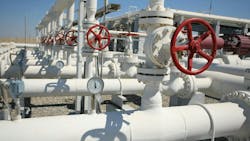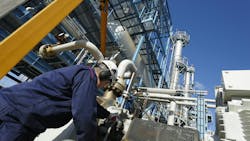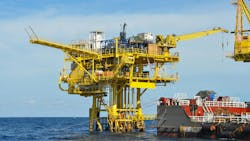The Importance of Proactive Maintenance in the Oil & Gas Industry
Equipment failures in the oil and gas industry aren’t just inconvenient — they're costly, hazardous and often preventable. A single breakdown can halt operations, create safety risks and lead to millions in lost revenue.
Yet, many companies still take a reactive approach, waiting for problems to arise before addressing maintenance issues. This outdated mindset results in unplanned downtime, expensive emergency repairs and increased liability.
A proactive maintenance strategy changes the equation. Real-time monitoring, scheduled inspections and predictive maintenance not only reduce failures but also optimize asset performance, extend equipment lifespan and improve operational efficiency.
Being more proactive about maintenance can make it easier to detect potential issues with the fluid power or other components utilized in oil and gas equipment before they cause negative impacts to machine performance. This can help to prevent costly unplanned downtime while ensuring equipment continues to perform as desired, aiding overall productivity and efficiency for an operation.
By investing in proactive maintenance, oil and gas operators can keep production steady, minimize costs and safeguard both their reputation and bottom line.
Strengthening Equipment Reliability Through Structured Inspections
A well-planned inspection program is critical to identifying vulnerabilities before they escalate into major failures. Corrosion, mechanical stress and pressure fluctuations are common issues that, if left unchecked, can lead to catastrophic breakdowns. Implementing structured inspections enables companies to systematically detect and resolve these risks.
An effective inspection strategy includes:
- Corrosion monitoring – Identifies metal degradation in pipelines, storage tanks and offshore structures, allowing for early intervention before structural failure occurs.
- Risk-based inspection (RBI) strategies – Focuses maintenance efforts on high-risk equipment based on operational data and historical failure trends.
- Regulatory compliance inspections – Keeps assets in line with industry standards and safety regulations, avoiding costly penalties and operational shutdowns.
- Failure tracking and root cause analysis – Identifies patterns in equipment breakdowns, allowing for better planning and refinement of future inspection schedules.
By integrating and continuously updating these measures, oil and gas companies can extend equipment life, minimize downtime and reduce unexpected failures that lead to production losses and safety incidents.
Leveraging Technology for Predictive Maintenance
Advancements in technology have made it possible to move from reactive to predictive maintenance, allowing companies to anticipate failures before they happen. Artificial intelligence (AI), Internet of Things (IoT) enabled sensors and real-time data analytics provide operators with a clearer picture of asset health and performance.
Some of the most effective diagnostic tools include:
- IoT-Enabled Sensors – Monitors vibration, pressure and temperature in real-time, providing instant alerts when equipment shows signs of stress or wear.
- AI & Machine Learning – Analyzes operational data to identify patterns and predict potential failures, helping maintenance teams act before breakdowns occur.
- Drones & Robotics – Performs inspections in offshore platforms, confined spaces and hazardous environments, reducing the need for manual inspections in dangerous locations.
- Digital Twin Technology – Creates a virtual model of equipment, allowing operators to simulate performance and test maintenance strategies without disrupting operations.
- Acoustic Emission Testing (AET) – Uses sound waves to detect micro-cracks and leaks in pipelines and pressure vessels.
- Ultrasonic Testing (UT) – Identifies internal defects in high-pressure systems to prevent unexpected failures.
- Magnetic Flux Leakage (MFL) – Pinpoints corrosion and pitting in pipelines and storage tanks, helping prevent leaks and structural weaknesses.
Reducing Downtime and Costs with Proactive Maintenance
Investing in equipment reliability by establishing a more proactive maintenance strategy directly impacts profitability. Unplanned shutdowns don’t just halt production — they can result in expensive emergency repairs, regulatory fines and lost revenue.
Companies that implement proactive maintenance strategies experience:
- Extended asset lifespan – Preventative care helps maximize the durability of critical infrastructure, reducing replacement costs.
- Lower repair expenses – Addressing small issues before they escalate prevents costly emergency interventions.
- Stronger compliance – Keeping equipment in peak condition helps meet safety and environmental standards, reducing legal and financial risks.
- Higher operational efficiency – Well-maintained equipment improves production output and prevents bottlenecks caused by unexpected failures.
Reliability is a Strategic Advantage
In an industry where efficiency, safety and financial stability are interconnected, reliability is not an option, it’s a necessity. Companies that take a proactive approach to maintenance by leveraging advanced technology and prioritizing structured inspections will not only reduce failures and operational risks but also gain a competitive edge in the market.
Investing in reliability today means lower costs, fewer disruptions and long-term sustainability in an increasingly demanding oil and gas industry.
This article was written and contributed by Dauren Kazimbek, Business Development Manager at SMARTCORR — a provider of comprehensive solutions to protect asset integrity.
About the Author
Dauren Kazimbek
Business Development Manager, SMARTCORR
Dauren Kazimbek is Business Development Manager for SMARTCORR which develops comprehensive solutions to protect asset integrity. Kazimbek has 25 years of experience in the industry and focuses on business development, investment and management.



